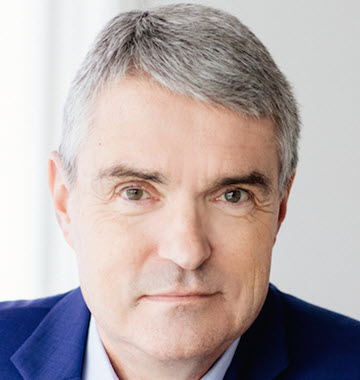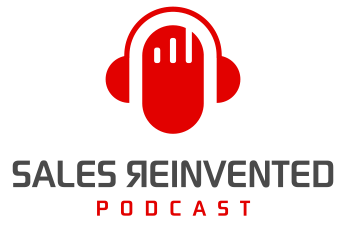Episode #379: Mark Hunter

Meet
Mark Hunter
Mark Hunter, CSP, “The Sales Hunter,” is recognized as one of the top 50 most influential sales and marketing leaders in the world. He is the author of High Profit Prospecting, High-Profit Selling, and A Mind for Sales. Prior to becoming a sought-after sales speaker, Mark spent 15+ years driving success in three Fortune 200 companies in both sales and marketing roles. Since starting his own company, Mark has been helping companies identify better prospects, close more sales and profitably build more long-term customer relationships for over 20 years.
Our Mission Is To Change The Negative Perception Of Sales People
Our Vision Is A World Where Selling Is A Profession To Be Proud Of
No one takes a meeting without checking someone out. When they Google your name, the first result is usually LinkedIn. According to Mark Hunter, your reputation arrives before you do. So how do you make the best first impression? A LinkedIn profile that sells. He shares how to carefully craft your profile in this episode of Sales Reinvented.
Outline of This Episode
- [1:07] Is a compelling LinkedIn profile important?
- [2:12] The elements to leverage on your LinkedIn profile
- [3:54] How to tell your professional story on LinkedIn
- [5:07] Balancing professionalism and personality
- [8:26] When to update your LinkedIn profile
- [10:37] How to improve the impact of your LinkedIn profile
- [14:16] Mark’s top three LinkedIn profile dos and don’ts
- [19:22] Transforming your profile transforms your sales
The elements to leverage on your LinkedIn profile
What makes a good profile? Properly sharing who you help and how you help them. You also need to share who you work for and your level of experience. The first description they see must entice them.
So how do you come up with an enticing LinkedIn profile? Look at the profiles of 10+ people you respect. What are they doing? It’s probably what you should be doing, too. But keep in mind that what’s “perfect” is constantly evolving.
If you’re looking at other people’s profiles and you’re seeing a shift in what they’re doing, why not try it? Is your profile coming up in Google searches? You can make a change, leave it there, and see if it moved the dial.
When to update your LinkedIn profile
How often should you update your profile?
- When you get a new hairstyle, glasses, etc.
- When you take a new job or position
- You get a new certification or complete education
Secondly, keeping your profile up to date is often more about posting. If you haven’t posted in a few months, you won’t stay relevant. Get content out there. And if you aren’t showing up in search results, It’s time for a refresh.
How to improve the impact of your LinkedIn profile
When is your audience on LinkedIn? You want to post when your target audience is most active. For Mark, that’s Monday mornings. You have a 2–3 hour window for engagement to happen. When you post, you need engagement. Are people sharing your content? Are they commenting on it? Are you interacting with them? Are you getting comments from second-level connections? LinkedIn wants to build a community. The more your content is shared and commented on, the bigger your audience becomes.
Consistency and engagement are key to LinkedIn success
Mark is a consultant and trainer who travels a lot. During one of his trips, he posted a quick 15-second video while walking through an airport. It garnered a lot of comments. So he started sharing a 15-second video every morning at 6am, Monday through Friday.
Because he spent a lot of time in airports, he quickly created an inventory of videos with a quick sales tip. People loved and followed those videos. He hasn’t done one in four years and he still gets comments about them.
Mark wasn’t always in the mood to post a video but he knew he had to keep going. You have to consistently focus on engagement.
Have you heard of LinkedIn’s newsletter feature? Mark shares how to leverage it in this episode of Sales Reinvented.
Connect With Paul Watts
Audio Production and Show notes by
PODCAST FAST TRACK
https://www.podcastfasttrack.com
Learn More About Mark Hunter
Are there any definitive guides or resources you recommend for crafting an effective LinkedIn profile?
First, of course, is a decent headshot. Your profile is your front door, it’s how customers and others are going to see you, make it look good. Remember, first impressions are lasting impressions. Second, look at ten profiles of people you respect to see what they’re doing and copy them. This is the easiest way, as it allows you to learn from others. If it works for them, it will most likely work for you.
In the realm of LinkedIn branding and sales, who do you most admire and why?
Two people I respect are Brynne Tillman and Richard Bliss. Both are keen experts when it comes to understanding LinkedIn. Follow them, copy them. They’re both excellent.
What are your top ten tips for someone looking to optimize their LinkedIn profile for sales – your golden advice set?
Apart from the things I’ve described above, never forget you have to create a relationship before you can even think about selling. Others may claim differently, but I’m all about using LinkedIn for the long game. It’s a networking tool, one where we share and learn from each other and in time the door will open should the need present itself to sell.
What are the primary considerations that companies should be aware of regarding their employees’ representation on LinkedIn?
I take the role of the individual. Never forget this is your profile, it belongs to you; it does not belong to your employer! Now that does not mean you disrespect your employer when you have a bad day. No, it means you represent your employer in a way that makes you and them look good. Do I suggest you post your company’s marketing messages, blog posts, etc? The answer is sometimes, but never without adding your own commentary. You might be posting your employer’s content, but it’s still your profile!
Do you believe companies should provide specific training for employees to utilize LinkedIn effectively? Should this be a standard part of a salesperson’s induction/onboarding process?
We do this only as much as we need to provide training on how to use a computer. If the salesperson being hired doesn’t understand how to use LinkedIn properly, then we have to ask ourselves, “What has this person been doing the last 10 years?”
Can you share some case studies or examples of how a well-crafted LinkedIn profile has significantly impacted a company’s sales or networking capabilities?
I can use my own profile. There have been numerous times where I’ve been able to generate sales calls due to people looking at my profile, becoming engaged with my content, and in turn becoming a client. The key I’ve found is to provide value in everything. Your profile is not the place where you announce you’re the top salesperson, President’s club winner, etc. Ask yourself, do you think your customers care? Sorry, they don’t.
LinkedIn is constantly evolving. Are there any new features or strategies that you’re currently delving into or recommend sales professionals should explore?
One new one is the ability via the mobile app to have your headshot provide a short video. This is a great new feature, but it’s only available via the mobile app. Another one that’s been out for about two or three years is the newsletter feature. This is a great way to provide valuable content to your followers/connections and engage them.
The third feature is LinkedIn Live. I’ve been using this for several years and have found it to be amazing at creating community. The key with this is doing it well and being consistent. For example, every Saturday morning at 8 AM ET, I do a 30-minute live show with Meridith Elliott Powell; we call it Sales Logic. Our consistency and commitment to quality has allowed us to create a sizeable live audience.
How do you balance showcasing your hobbies and interests on LinkedIn, ensuring it complements your professional brand?
Follow the 80/20 rule. LinkedIn is a business page first, this means 80% of your posts must be business-focused while 20% can be personal. Remember LinkedIn is not Facebook, Snapchat or Instagram.
For listeners eager to learn more, what’s the best way to connect with you on LinkedIn or other platforms?
You can follow me on LinkedIn, just search for Mark Hunter “The Sales Hunter.” You’ll also find me on most other social media platforms, but LinkedIn is my #1 go-to site.
Share This Episode, Choose Your Platform!
